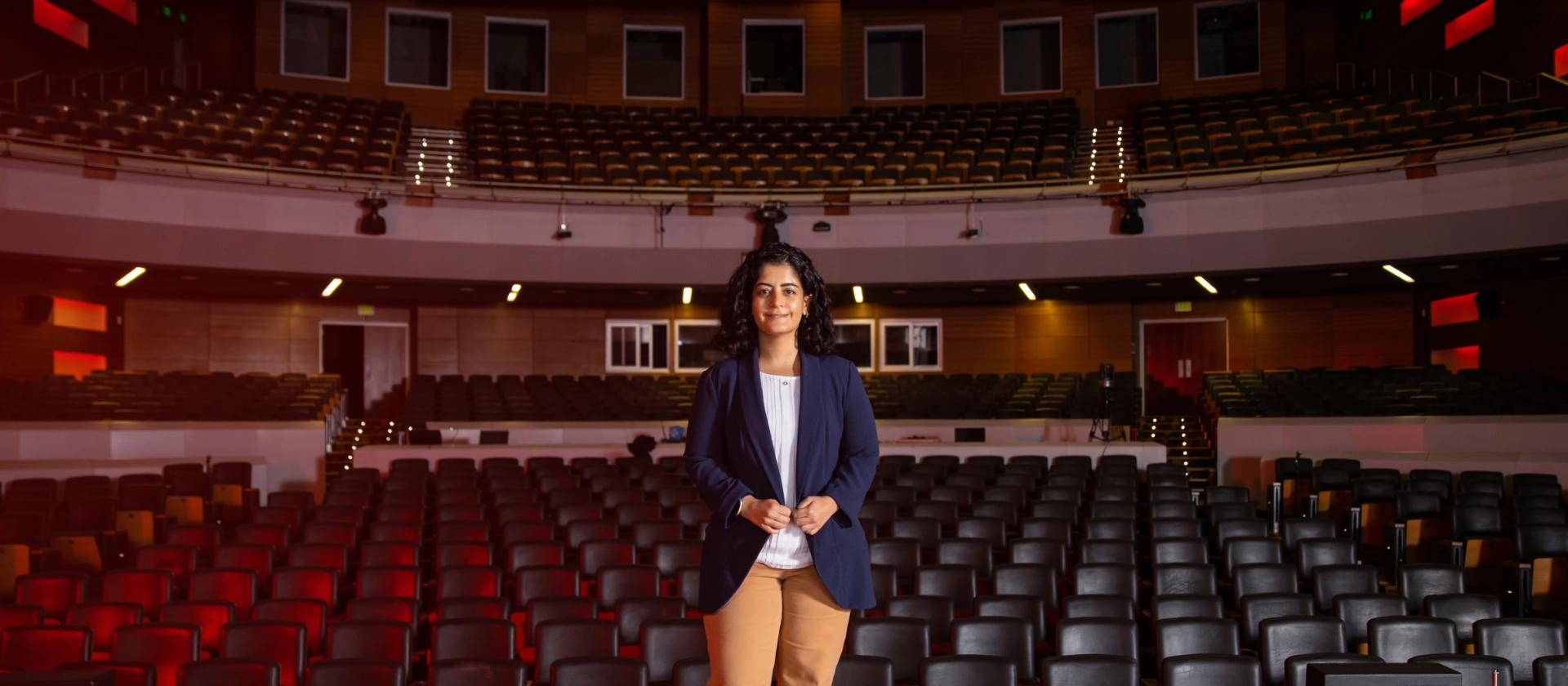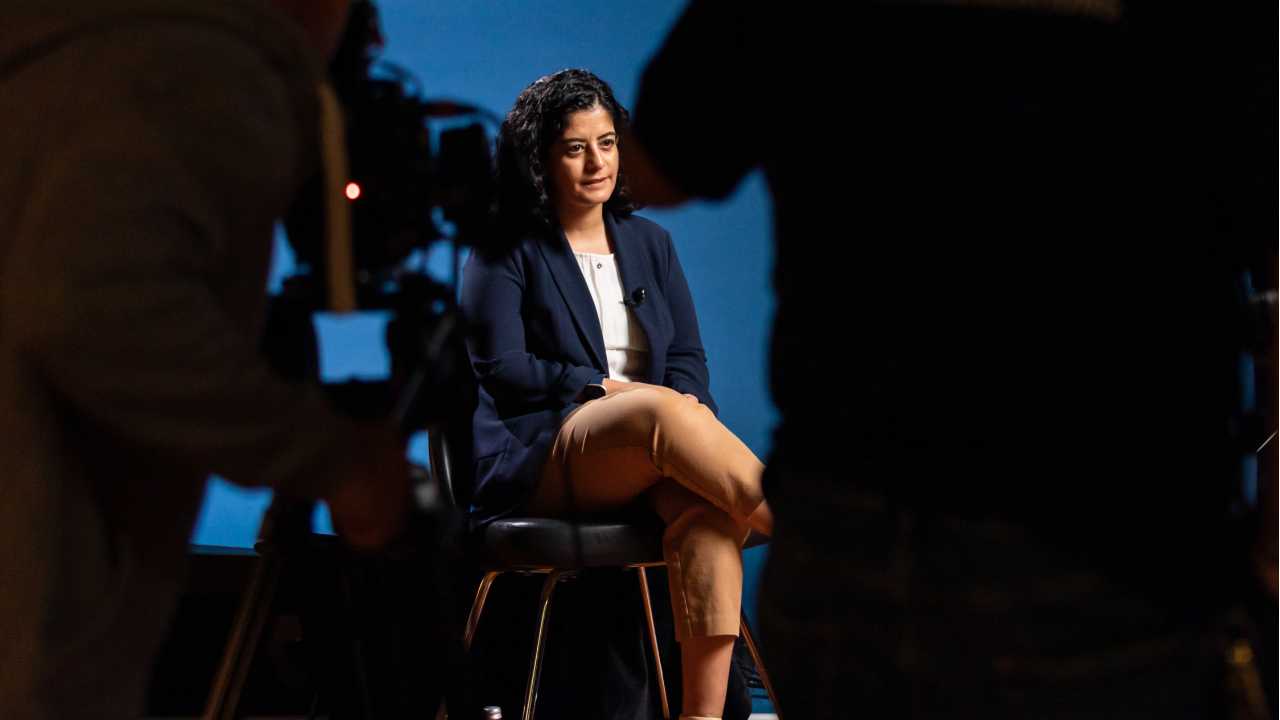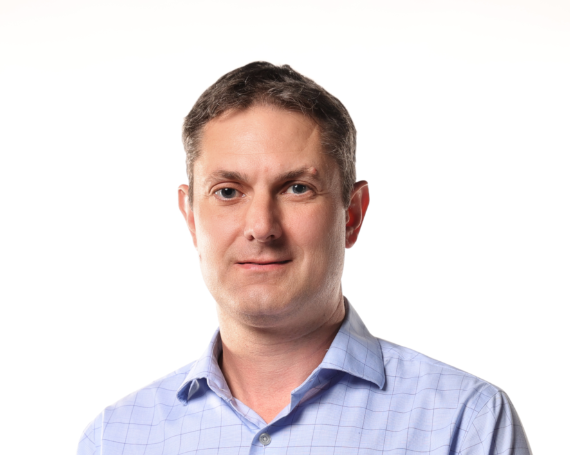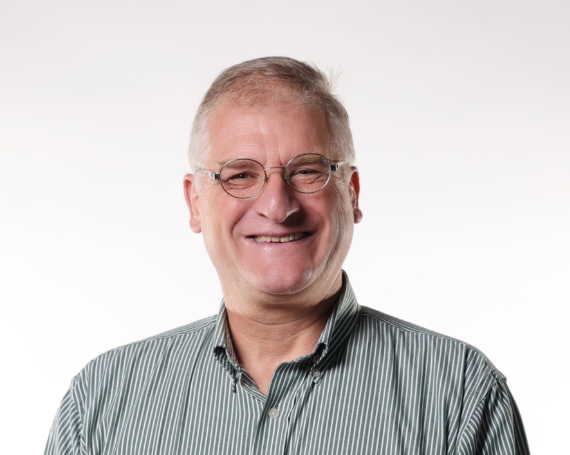
Professor Leena Ibrahim was born in Palestine and grew up between India and Bulgaria. From an early age she was keenly interested in biology, and until high school she felt that the obvious career path for her would be medicine. At that time, however, the Human Genome Project was making huge strides towards determining the precise structure of human DNA, and this opened Ibrahim’s eyes to possibilities she had not yet considered. “One thing I realized while I was in high school,” she reveals with a smile, “was that all the discoveries are made by scientists; they’re not made by medical doctors.” From that point, the quest for discovery formed the basis of Ibrahim’s academic pursuits.
Those pursuits began in earnest with a bachelor’s degree in biomedical science, “just so [she] could understand a little bit more about the subject,” which she obtained from University of Delhi in New Delhi, India. Then, upon completing her master’s degree at Jawaharlal Nehru University, also in New Delhi, she moved to the United States to study for a Ph.D. in neuroscience at University of California Los Angeles. During her Ph.D., she was researching “how the brain uses cross-modal information to process sensory stimuli,” that is, how a person’s hearing, for example, might affect their visual perception. This research led to her first big discovery: “a group of cells [in the brain] that were very important for this process,” which in turn led her to a postdoc at Harvard University to continue that research for four more years.
The branch of study Ibrahim chose is called systems neuroscience. It’s an astonishingly broad and rich subject, which seeks to learn “how our brains are affected by all the sensory experiences that we are exposed to in our lifetime.” There’s a lot that is known already, for example that environmental factors such as stress can impact “how we perceive visual information;” but the challenge, as Ibrahim describes, is in “understanding the circuitry behind it.” That challenge alone will require “the development of new imaging and manipulation tools,” to further understand the specific cells and processes about which almost nothing is known.
With so much awaiting discovery, Ibrahim needed to find the next stop on her academic journey, and fortunately she discovered KAUST. In 2019, she was speaking at a conference where Pierre Magistretti, now KAUST’s Vice President of Research, was the keynote speaker. He told her about the state-of-the-art university by the shores of the Red Sea, and of the resources available for exactly the research Ibrahim wanted to conduct. Not only that, but KAUST offered her, “an environment where [she] could be close to [her] family while doing cutting-edge research.” These factors combined led to her joining the faculty in 2021, and since then she has been busy not just with her own research, but also with helping her students.
Ibrahim has strived to create an environment where she and her students can “grow together while answering these exciting research questions,” and she finds great joy in seeing their successes. A lot of the research they do involves surgery on mice, and one of her students developed a way to minimize bleeding. What seems like quite a small breakthrough, relatively speaking, was important to Ibrahim because it showed the student was “really thinking about different kinds of ways to improve survival.” This is the kind of thinking she knows will lead to the bigger discoveries, and she knows that patience and perseverance are what’s needed to get there. “It’s a journey for both of us,” she affirms with humility, “for me as a young professor, and for the students in my lab.”



